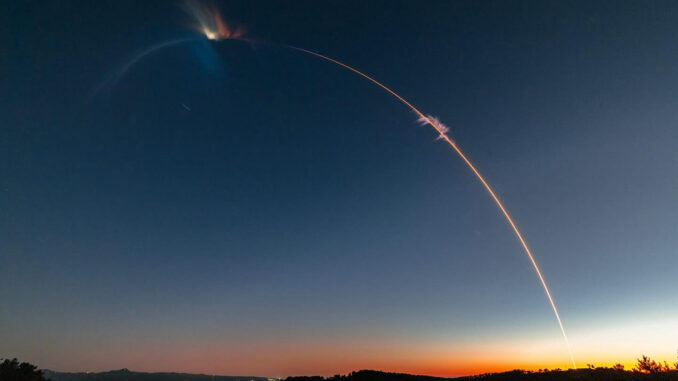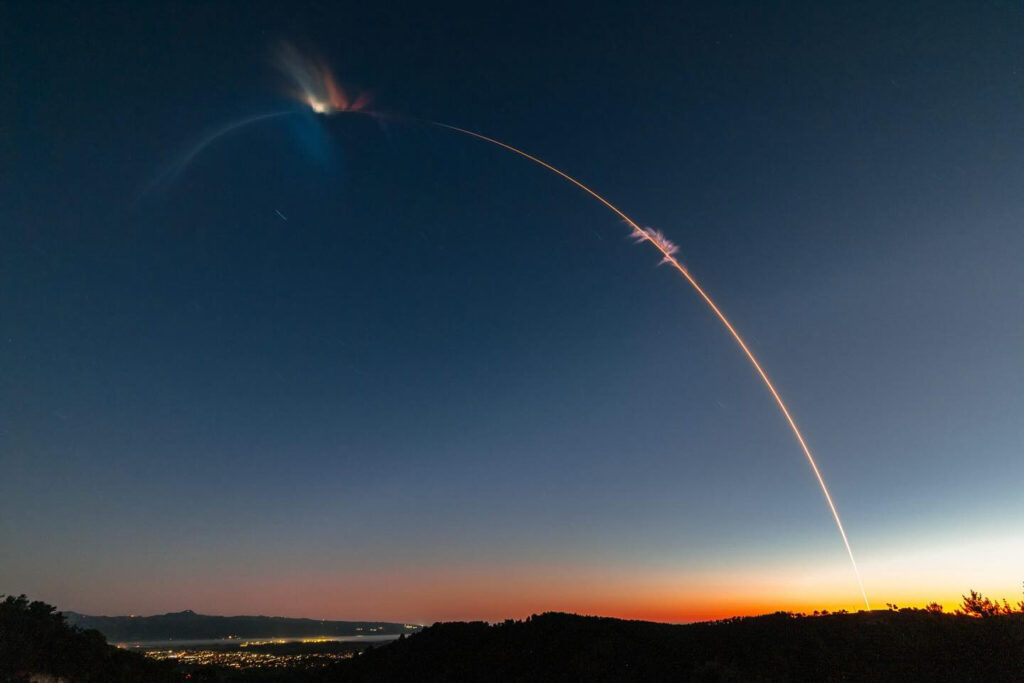
Voyager Space is providing propulsion technology for the Next Generation Interceptor, strengthening US missile defence against ballistic threats.
Voyager Space, in collaboration with Lockheed Martin, is developing a propulsion subsystem for the US Missile Defense Agency’s (MDA) Next Generation Interceptor (NGI). This project aims to strengthen defence against intercontinental ballistic missile threats by improving the accuracy and stability of interceptors through roll control and phase separation systems. This technology, originally developed under research contracts with the US Army, represents a key advance for national security.
Next Generation Interceptor: a pillar of missile defence
The Next Generation Interceptor (NGI) programme is a central component of the Ground-based Midcourse Defense (GMD) system, designed to intercept and destroy intercontinental ballistic missiles (ICBMs) in flight. This programme aims to replace current interceptors with more advanced versions, capable of countering increasingly sophisticated threats. The NGI incorporates cutting-edge technologies, such as advanced control algorithms and high-performance propulsion systems, to improve the precision and effectiveness of interceptors.
Voyager Space plays a crucial role in this programme by providing a propulsion sub-system designed for Roll Control System and Stage Separation Propulsion System. These systems are essential for maintaining the interceptor’s stability during flight, particularly during the critical phases of stage separation and enemy missile engagement. The Roll Control System, for example, uses micro-thrusters to adjust the direction and rotation of the interceptor, ensuring a precise trajectory towards the target.
Voyager Space propulsion technology
The propulsion technology developed by Voyager Space is the result of several years of research and development, initially funded by Small Business Innovation Research (SBIR) contracts with the MDA and the US Air Force. This research has led to the commercialisation of advanced propulsion systems capable of meeting the rigorous requirements of missile defence missions.
The roll control system and stage separation propulsion supplied by Voyager Space are designed to operate in extreme environments, with varying temperatures and pressures. These systems must also be able to respond quickly to real-time commands, in order to correct any trajectory deviation and ensure the destruction of the target missile. The accuracy required for these operations is critical, as the slightest error could result in the failure of the interception.

Strategic implications for national defence
The development of this propulsion technology by Voyager Space in partnership with Lockheed Martin represents a strategic advance for the United States. By enhancing the interceptor’s ability to hit its target accurately, these systems increase the probability of success of missile defence missions, thereby reducing the United States’ vulnerability to ballistic missile attacks.
This advance is particularly important in the current geopolitical context, where a number of opposing nations are developing increasingly sophisticated missiles capable of thwarting existing defence systems. The Next Generation Interceptor, equipped with Voyager Space technologies, offers a technological response to these threats, helping to maintain US superiority in missile defence.
Consequences for the defence industry
Voyager Space’s involvement in the NGI programme also highlights the growing importance of small and medium-sized enterprises (SMEs) in the defence sector. These companies, which are often more agile and innovative, play a key role in the development of cutting-edge technologies. The partnership with Lockheed Martin enables Voyager Space to demonstrate its ability to provide critical technological solutions for national defence programmes.
It also paves the way for future collaborations between Voyager Space and other US military branches, such as the US Army and Navy, for the development of similar systems or systems adapted to other types of threats. The success of this programme could also position Voyager Space as a leader in defence propulsion, with significant commercial implications beyond the US market.
The partnership between Voyager Space and Lockheed Martin to develop the propulsion subsystem for the Next Generation Interceptor represents a major step forward in US missile defence. This collaboration highlights the importance of technological innovation in protecting against ballistic threats and underlines the strategic role of SMEs in the defence industry. With this technology, the United States is strengthening its ability to protect its territory against the growing threat of intercontinental ballistic missiles.
War Wings Daily is an independant magazine.